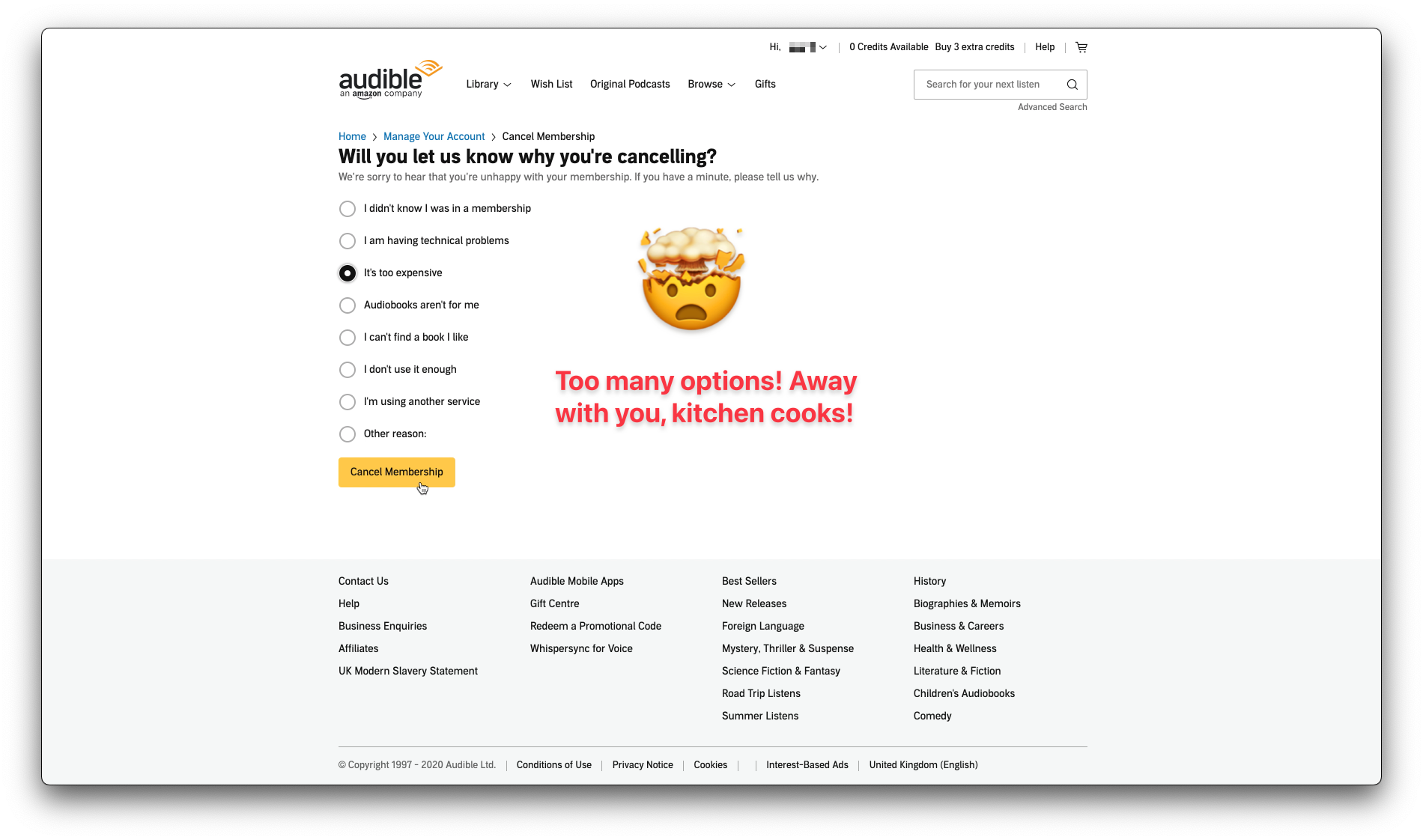How to Build Cancellation Surveys that Reduce Churn (with Examples)

Whether you call them exit surveys or cancellation surveys, one thing is for certain — they can be one of the most effective tools in your arsenal for reducing churn. And we all know that churn is one of the biggest hurdles for SaaS companies. But one of the best ways to reduce churn is to understand the reasons why customers are churning in the first place. Cancellation or exit surveys can provide invaluable insight into the needs and concerns of your customer base, along with feedback on why users may cancel your product.
Of course, in order to reap the benefits of customer exit surveys, you first have to know how to build ones that are effective. Let’s talk about what cancellation surveys are and how to build ones that reduce churn.
What is a customer exit survey?

A cancellation survey, or customer exit survey, is a series of structured questions that is presented to a user when they elect to cancel or downgrade their subscription to a SaaS product or service. The purpose of a cancellation survey is two-fold…
The first one is simple. Offering well-crafted exit surveys to customers during your cancellation flow gives you the opportunity to collect essential feedback on why users are leaving your product. Even further, you can use these types of surveys to garner a better understanding of your customer’s overall experience within your product. This data can then be used to improve your product, inform future product development, and reduce your overall churn rates.

But a good cancellation survey can do more than just prevent churn in the future — it can even stop churn before it happens. By using an exit survey to figure out why a user is cancelling, you can then provide targeted, personalized incentives to potentially retain that customer (more on that later).

How to build a cancellation survey that reduces churn
Like most things in your SaaS business, it’s important to use the correct strategies and tactics to build a truly effective cancellation survey. You want to create something that provides you with the data you need and offers an opportunity to retain the customer before they cancel while also remaining respectful of the customer’s time and needs.
Let’s talk through a few strategies and best practices you can use to build a cancellation or exit survey that reduces churn.
Keep your customer segments in mind
Just because a customer is potentially churning, it shouldn’t change the way you communicate with them. Every communication that you have with your customers should always be based on your customer segments. After all, there are always going to be different traits among your customer base.

Dividing them up and grouping them by those traits allows you to communicate with specific segments in a tone and with a strategy that works best for those specific customers. If you want to get the best results from your exit surveys, then it’s important to continue to use the tone and content that you’ve been using within the relevant customer segments.
Continue to deliver value
Every time you interact with a customer, you should always be looking for opportunities to demonstrate the value of your product or service. In a cancellation or exit survey, this can be as simple as expressing to them how much their opinion matters and assuring them that their feedback will be used to improve your product. You can also demonstrate value by offering customer service or troubleshooting assistance with any issues that customer may be having within your platform.
Ask the right questions
Asking the right customer exit survey questions is essential if you want to reduce the maximum amount of churn. The best strategy is always to present a short-form, simple exit survey so that your customers are more willing to engage. In that short survey, there are two main types of questions you can choose to ask: multiple-choice and open-ended.

Sticking with primarily multiple-choice questions is typically most effective, since it requires less effort from customers. Your goal with exit surveys should always be to create as little friction as possible — after all, these are people who are choosing to leave (at least for right now). You don’t want to make it difficult for them to do so. If you overwhelm a customer who’s in the process of cancelling or request too much effort in the form of an over-long cancellation survey, then it’s very likely that they’ll just skip over it, removing the opportunity for you to collect valuable data and potentially even recover the customer.
The aim of your survey questions should be to identify the most important reasons why users are canceling, offering them a preset list of known or possible issues. Try to always use an inquiring, non-confrontational tone in your exit survey questions. Here are some examples of exit survey questions…
- What’s the primary reason you’re canceling your account?
- Why did you decide to cancel?
- What made you choose to cancel?
Your multiple-choice list of answers can include options such as…
- The product doesn’t have features that I need
- I’m not using this product anymore
- It’s no longer in my budget
- I’m having technical issues
- I’m switching to a different product
While you don’t want to stuff your exit survey with open-ended questions, they do have their place. And one of the best ways to use an open-ended question is by providing “Other” as an answer option, followed by a text box. Another option is to ask targeted follow-up questions to survey selections.
If you only offer multiple-choice options to a question like “What made you choose to cancel?”, then there’s a chance that the customer won’t even see an option that accurately reflects their specific situation. You’re also likely to end up with a fairly even distribution amongst your multiple-choice answers, which isn’t helpful when it comes to collecting data and using it to improve your product.
You could also ask an open-ended question like “What could we do to improve our product?” or “Which product (if any) are you switching to?” And if you do choose to use an open-ended question, make sure it’s optional, not required.
Use answers to provide targeted offers
This is the second most vital part of your cancellation survey. Once you’ve built a good survey, you want to use the information it yields to reduce churn — preferably, before it ever happens. You can do this by presenting customers with point of cancellation offers that are a direct result of their responses to the exit survey. By providing users with a targeted offer that’s relevant to their exact issues, you can potentially re-demonstrate the value of your product.

Targeted offers can vary, but there are three common, effective options. You can present customers a cheaper tier or plan that they could switch to instead of cancelling, offer to pause their subscription (or extend their free trial), or provide them with a temporary discount.
When you use Churnkey, we’ll leverage our dynamic offers to calculate the best deal in real time, based on factors like lifetime value, subscription tier, and more.

For companies that serve international customers, Churnkey offers multi-lingual support out-of-the-box. These help reduce cognitive friction at the time of cancellation and keeps them more likely to stay with you.

Do you want to build cancellation and exit surveys that reduce churn?
Churnkey is designed for optimizing your cancellation flows, including cancellation surveys. We can help you turn your cancellation button into a retention engine, reducing churn by up to 58%. Sign up for a free trial and see firsthand how Churnkey is helping SaaS businesses reduce churn and retain more users.



